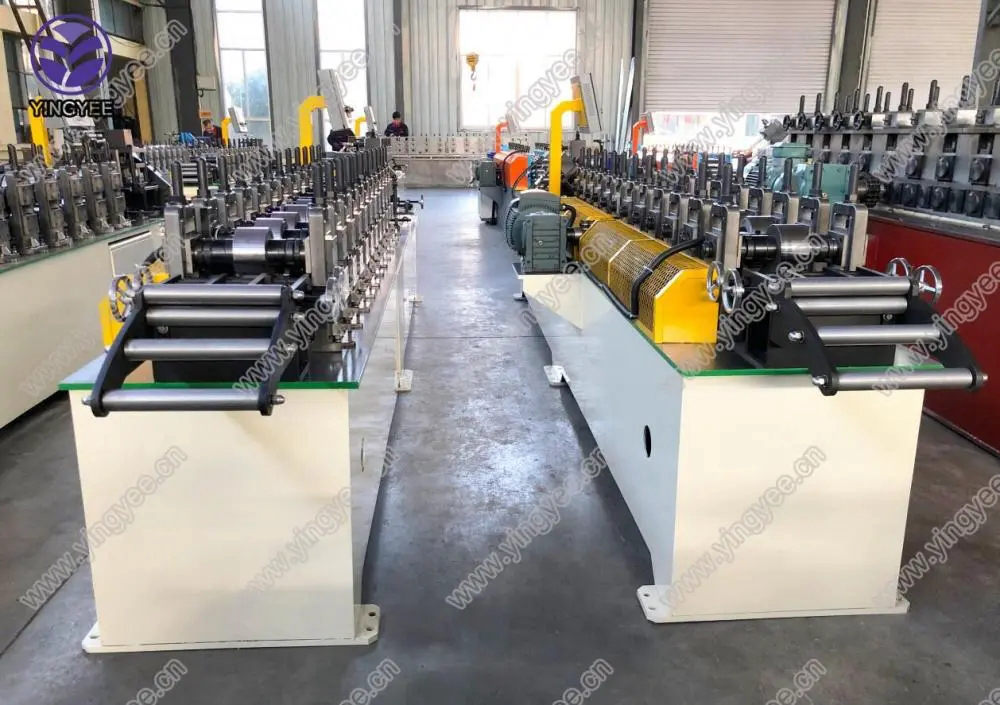
Road Safety Barrier Cold Bending Machine Ensuring Safety with Precision Engineering
In the ever-evolving landscape of infrastructure development, road safety remains a paramount concern for governments and agencies worldwide. One of the critical components in enhancing road safety is the installation of barriers designed to mitigate risks and prevent accidents. As the demand for effective road safety solutions grows, so does the need for advanced manufacturing technologies, such as the road safety barrier cold bending machine.
The Importance of Road Safety Barriers
Road safety barriers, including guardrails and crash barriers, play a vital role in protecting both vehicles and pedestrians. They are strategically placed along highways, roadsides, and pedestrian pathways to reduce the impact of collisions and prevent vehicles from veering off the road. These barriers come in various designs and materials, each tailored to meet specific safety standards and conditions. However, the efficacy of these barriers heavily relies on precise engineering and quality fabrication, making the role of machinery like the cold bending machine indispensable.
What is a Cold Bending Machine?
A cold bending machine is a specialized piece of equipment used in the manufacturing process of metal components, particularly those needed for road safety barriers. Unlike traditional bending methods that involve applying heat to modify the shape of metal, cold bending machines operate at room temperature. This technique provides several advantages, including maintaining the integrity of the metal’s properties and achieving greater accuracy in shaping.
Cold bending not only ensures that the material retains its strength and durability but also allows for finer details in the bends and curves necessary for designing effective safety barriers. This precision is crucial, as the performance of the barriers in real-world conditions can significantly influence their effectiveness in safeguarding lives.
Key Features and Benefits of Cold Bending Machines
1. Precision Engineering Cold bending machines utilize advanced technology, including computer numerical control (CNC), to achieve high levels of accuracy. This precision ensures that each component of the road safety barrier fits perfectly, enhancing the overall integrity and effectiveness of the barriers.

2. Versatility These machines can be configured to bend various types of metal, including steel and aluminum, which are commonly used in barrier fabrication. This adaptability allows manufacturers to produce a wide range of barrier designs and sizes to meet different road safety requirements.
3. Reduced Material Waste Cold bending is an efficient process that minimizes material waste. By carefully controlling the bending process, manufacturers can optimize the use of raw materials, leading to cost savings and a reduced environmental footprint.
4. Enhanced Strength and Durability Since cold bending does not involve heating, the mechanical properties of the metal remain largely unchanged. This results in road safety barriers that can withstand significant impact forces, ensuring they perform well under various conditions.
5. Faster Production Rates The automation features of modern cold bending machines allow for faster production cycles, enabling manufacturers to meet high demand without compromising quality. This efficiency is essential in times of urgent infrastructure development, ensuring that safety measures are implemented promptly.
The Future of Road Safety with Innovative Technology
As cities and road networks continue to expand, innovative technologies like the cold bending machine will play an increasingly vital role in enhancing road safety. The ongoing advancements in manufacturing processes, coupled with a growing emphasis on safety standards, will undoubtedly lead to the development of even more sophisticated road safety barriers.
Investing in state-of-the-art cold bending machinery will empower manufacturers to create barriers that not only meet but exceed safety regulations. Moreover, as research in materials science progresses, the potential for using alternative, even more sustainable materials for barriers will emerge, further driving the evolution of road safety solutions.
In conclusion, the road safety barrier cold bending machine represents a significant leap forward in the manufacturing of critical safety equipment. By ensuring precision, strength, and efficiency, these machines are pivotal in producing road safety barriers that can protect lives and reduce the severity of traffic accidents. As the industry moves toward more innovative practices, the commitment to safety will remain at the forefront, fostering a safer environment for all road users.